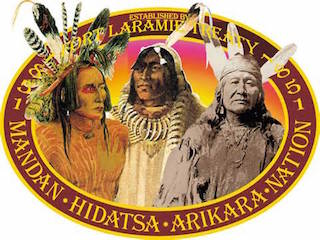The Arikaras
(Sahnish) came from the south, many years ago, to the
Missouri River in what is now North Dakota and the Fort
Berthold Reservation in South Dakota, where they live today.
With them, they brought not only reliance on corn as their
most important agricultural crop, but also their appreciation
of it as a divine gift. The Great Spirit Above gave them corn
and they show their gratitude every year in their ceremonies.
The oral history of the Sahnish
people is taken from sacred bundles and is verified by
archeological findings. Ancient objects and ceremonies are
part of the oral history of the people. The Sahnish history
has its roots in eastern Nebraska where numerous village sites
were found. Oral history tells of a person called "Chief
Above" who brought these villages together in a union for
protection against waiting tribes. Archeologists confirm there
was a drawing together into large villages on the Elk Horn
River in what is now called Omaha, Nebraska, at the end of the
prehistoric and beginning of the proto-historic period.
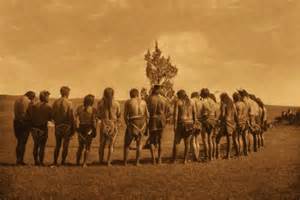
In these religious ceremonies, corn was honored and referred
to in the endearing and also the highly respectful title of
"Mother Corn." At a certain time in the ritual, one of the
leaders of the tribe made an address to Mother Corn in the
following words, or in words with similar effect.
Corn played an important mythological role in many tribes as
well-- in some cultures Corn was a respected deity, while in
others, corn was a special gift to the people from the Creator
or culture hero. In addition to its importance as a food
source, corn also played a ceremonial role in many tribes,
with sacred corn pollen or cornmeal being used as ritual
adornment and spiritual offerings.

The coyote deity Chirich is the trickster figure of Arikara
mythology. He is clever but reckless, and is forever getting
himself and the people around him into trouble, particularly
through socially inappropriate behavior like greediness,
boastfulness, lying, and chasing women. Like modern cartoon
characters, Chirich frequently dies during the course of his
adventures and returns randomly to life-- it is impossible to
truly get rid of that trickster for good. Chirich stories are
often humorous in nature, but they can also be cautionary
tales about the consequences of bad behavior and the dangers
of interacting with irresponsible people.
The Arikara name Atina (or Atna) literally means just
"Mother"; the "corn" was added to her name by anthropologists
because she was the goddess or spirit of the corn. According
to Arikara mythology, Nishanu created the Corn Mother from an
ear of corn and she became the protector of the Arikaras,
leading them to their homeland and teaching them to farm.
Chief
Rushing Bear
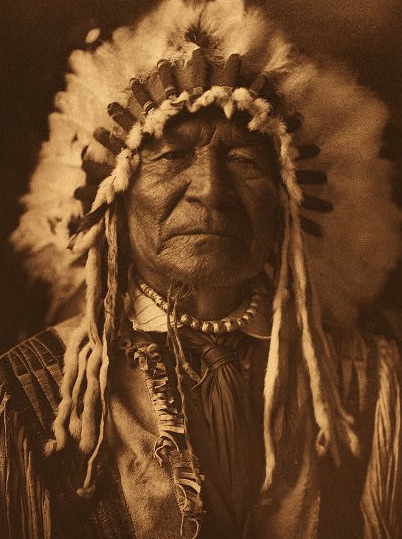
Chief Rushing Bear was an Arikara Indian leader of the 19th
century. His Arikara name, Kuunux-tuunawiinx or
Kunuh-dunawenag, means "Rushing Bear," which he was commonly
called in English; but the Arikaras more often referred to him
by the honorific "Son of the Star" or "Son of Star." He was
second-in-command under Chief White Shield, and took over the
position of head chief of the Arikara tribe in the late 1860's
until his death in 1881.
Chief
Sitting Bear (Ku'nu'h-tiwit)
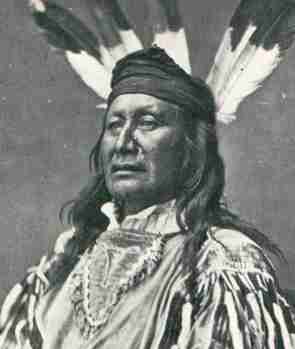
The Arikara tribal chief Kunuhtiwit (also spelled
Ku'nu'h-tiwit, Ku-nuh-ti-wit, or Kuunux-teewiita) was the son
of the important head chief Rushing Bear. His own name meant
"Sitting Bear" in the Arikara language, and he was often known
by that name in English. Kunuhtiwit was chief of the the
Arikara tribe from his father's death in 1881 until his own
death in 1915.
Arikara means "horns
or elk people, or corn eaters; people of the flowing hair"..
Alternate names for Arikara are: Northern Pawnee, Ricara,
Ree, Sahnish, Tsa'nish.
Arikara
Chiefs - Leaders
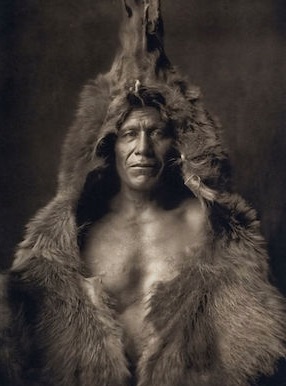
Arikara
Culture
Arikara
Images
Arikara
Language
 Return to Indigenous Peoples' Literature
Return to Indigenous Peoples' Literature
Compiled by: Glenn
Welker
ghwelker@gmx.com
Copyright
@ 1993-2016
This
site has been accessed 10,000,000 times since February
8, 1996.
